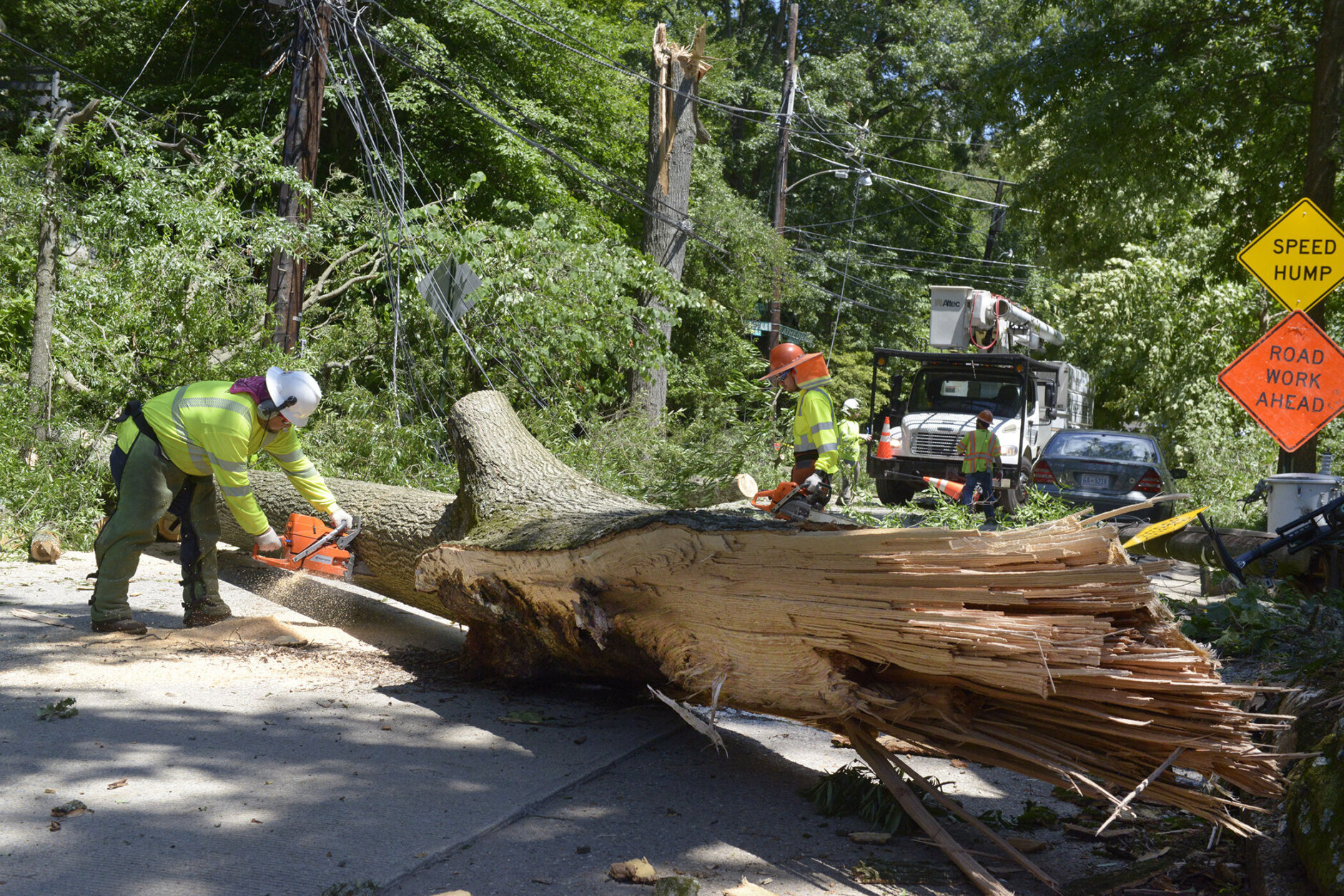
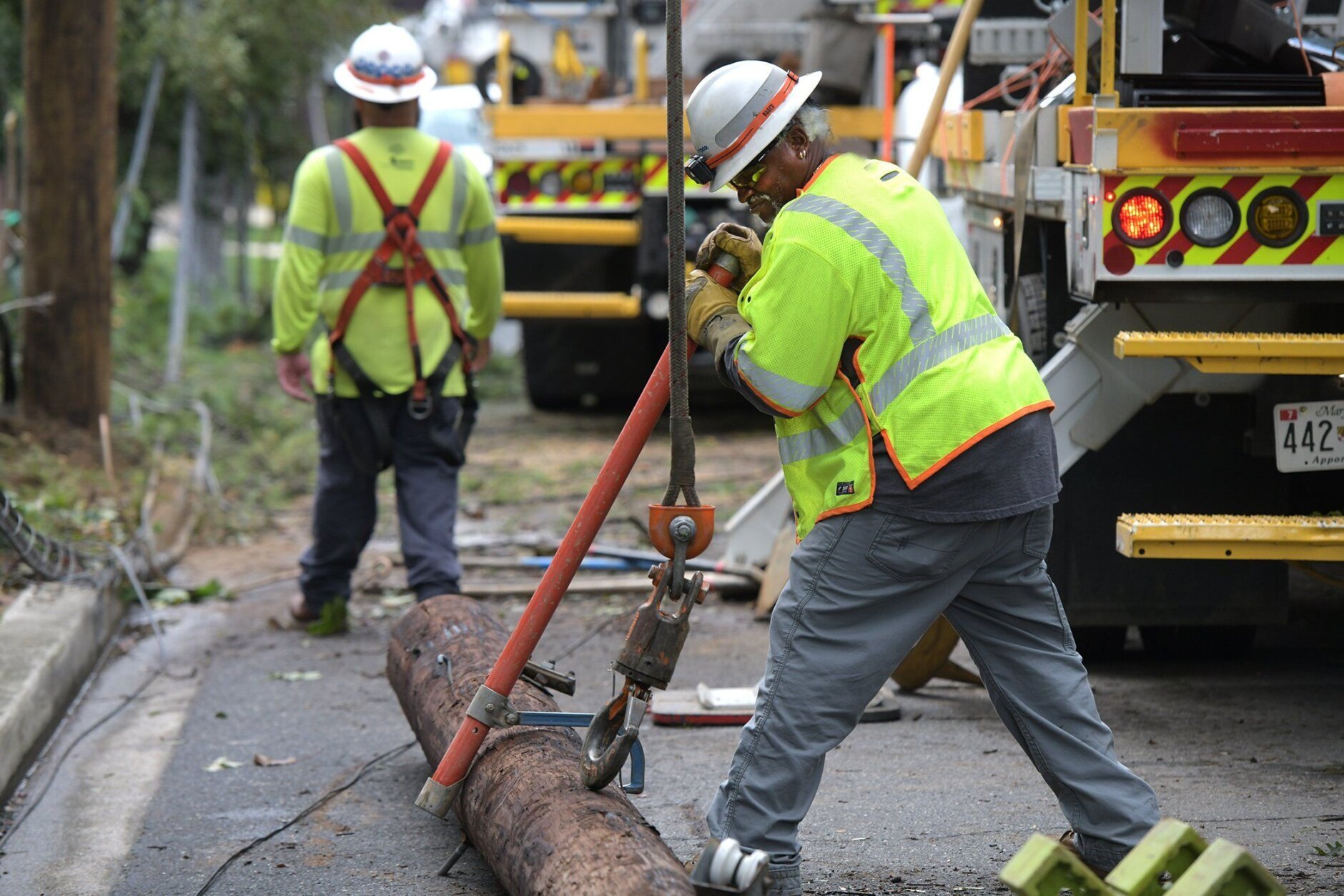
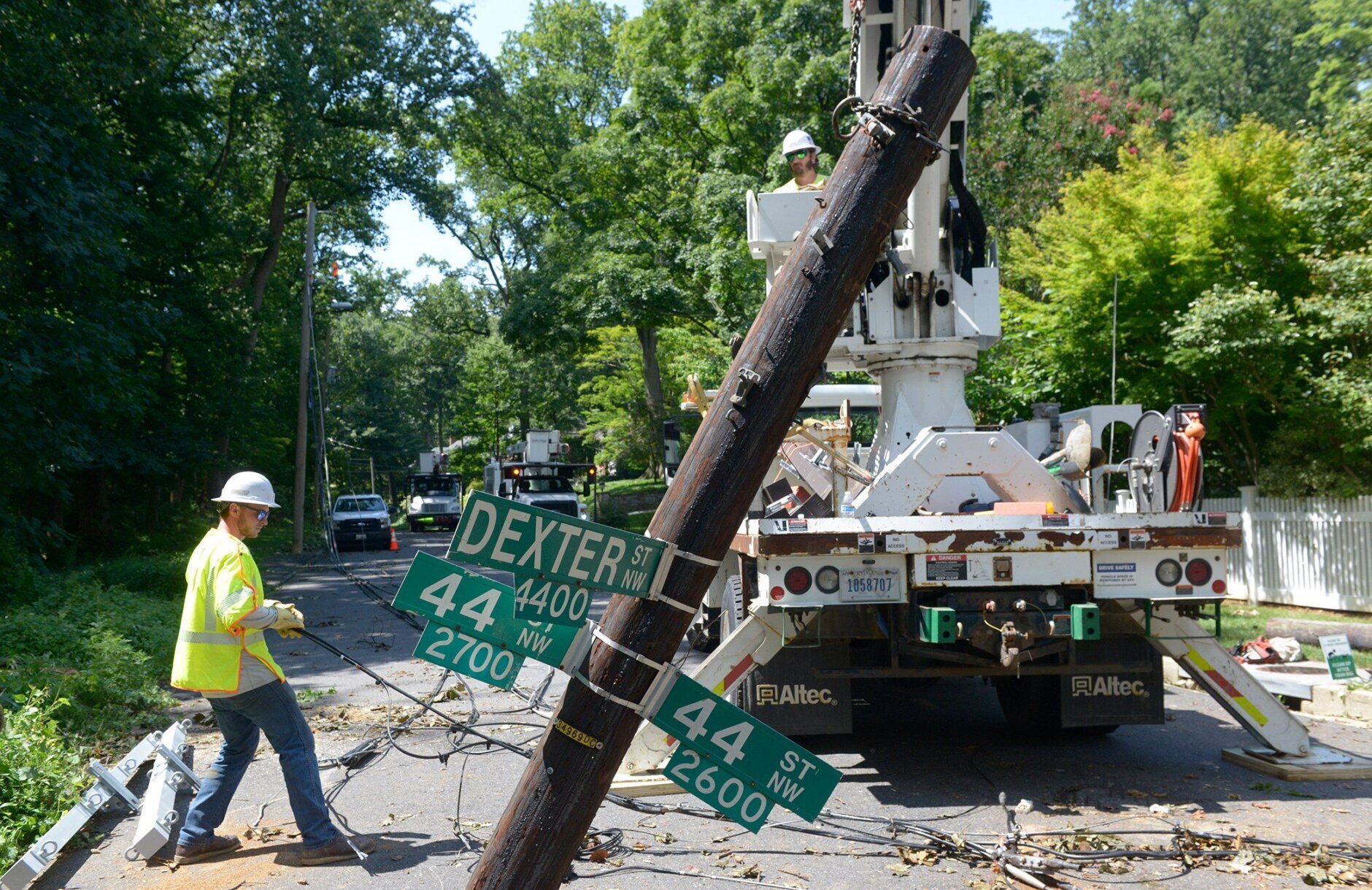
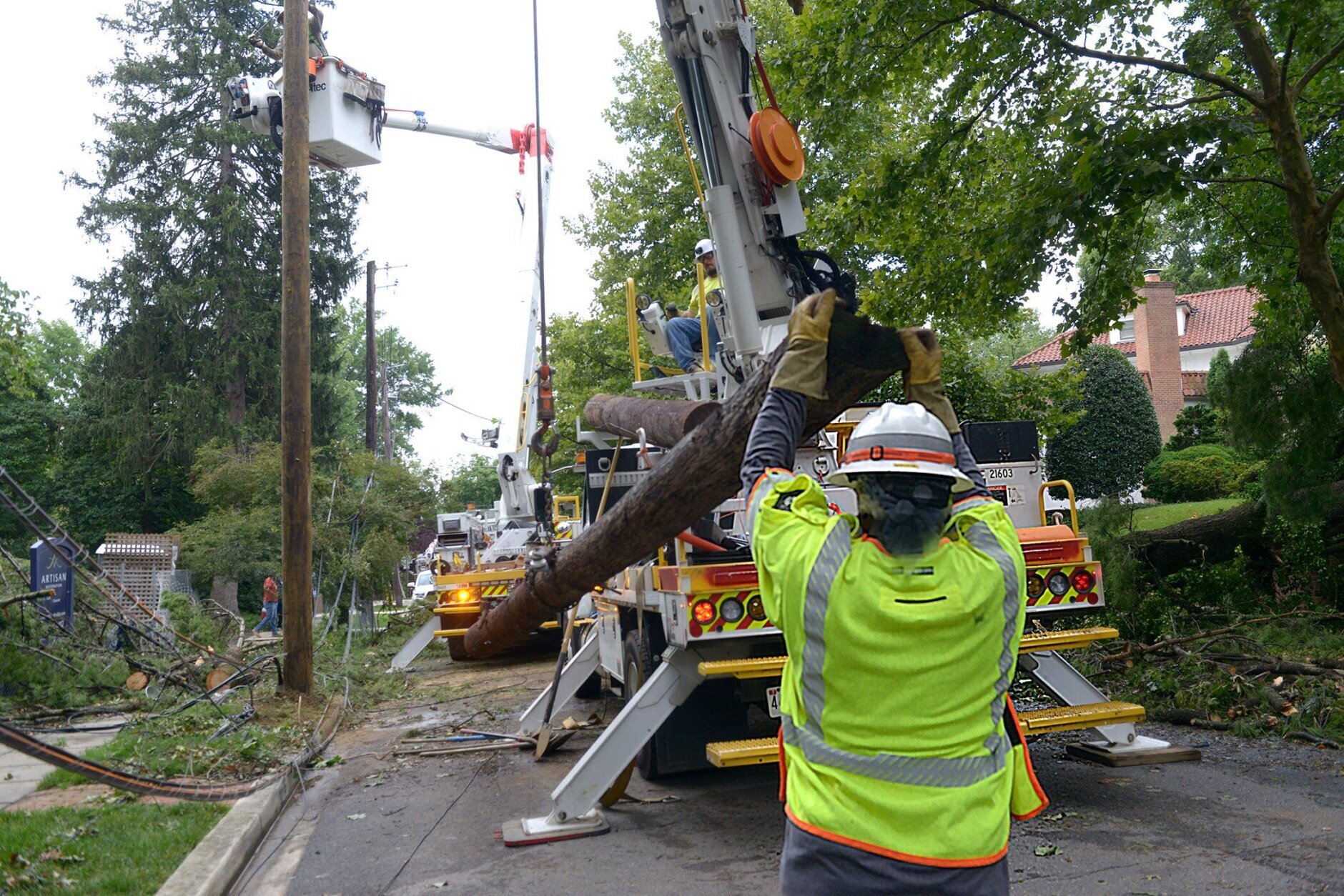
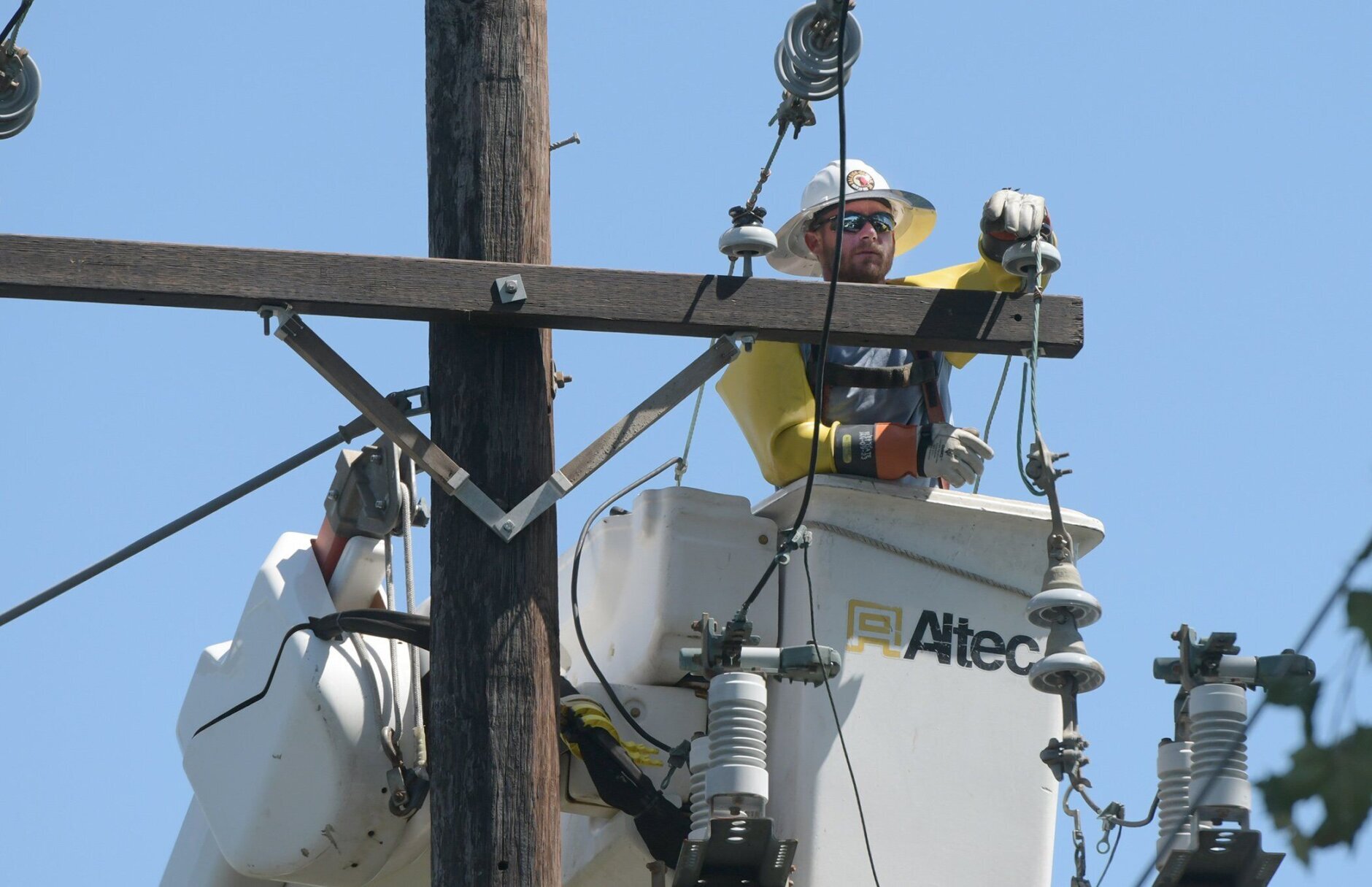
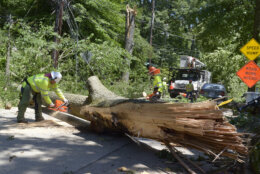
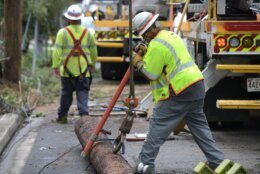
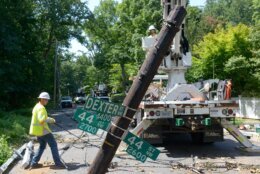
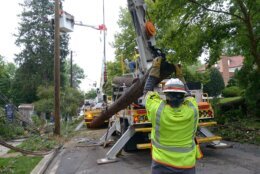
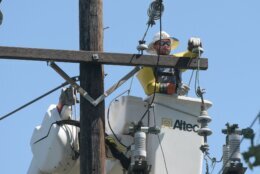
After Saturday’s storm in our region left homes cut in half and roads closed for days, many were left in the dark for hours — even days in some areas — and wondering when the power would come back on.
At the Pepco Mobile Command operations center, currently stationed in Rockville, Maryland, crews are able to go out on the field and help people when their power goes out during storms. In our area, the mobile center has been deployed for the past two weeks.
The 33-foot mobile vehicle is about the size of a camper Winnebago — but with a few cool additions. It has high-visibility lights, its own generating and satellite communication system and is completely self-sustained.
“I don’t think we expected the level we saw, but we expected to be impacted,” said Pete Pedersen, manager of emergency preparedness for Pepco Holdings, of Saturday’s burst of weather.
One of the biggest challenges the company said it sees is fallen trees that can down power lines. New technology, along with personal calls from residents, helps crews find where they need to go.
“The [automated meter reading infrastructure] will tell us when they’re out, so we know where the customers are out,” said Dane Merkel, the senior manager for utility training at Pepco.
This video is no longer available.
When severe weather hits the area, behind the scenes there’s some prioritizing. “Important” buildings like hospitals, nursing homes and 911 call centers are the first that crews try to respond to, said Pedersen.
Then, they assess the damage and try to get as large a group of customers restored as possible.
In order to prevent outages ahead of time, trees are trimmed by contractors throughout the year — something learned from other storms, including the derecho that swept the mid-Atlantic in 2012 — and storms can be anticipated through their own forecaster and meteorologists on their staff.
“There is a direct correlation between effective vegetation management and reduction in customer outages,” said Pedersen. “[Smart readers] actually quickly start to do switching before we ever get a crew there.”
A message the Pepco duo has for customers:
“We’re highly focused on getting the power back on, so we ask for that patience, we ask for that understanding of how difficult the situation is sometimes,” said Pedersen.
“For the general safety of the public, just stay away from the wires and infrastructure that’s down, be patient. Stay away from it, you never know,” said Merkel.
WTOP’s Ciara Wells contributed to this report.








